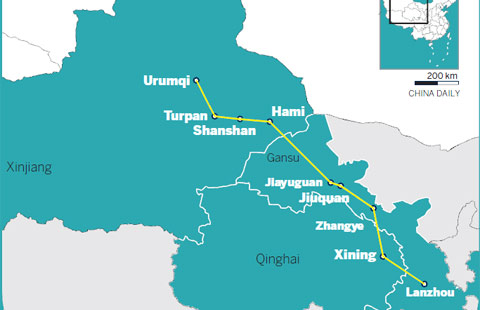Exec foresees 'Silicon Valley' developing in region
By Xu Wei in Shenzhen, Guangdong (China Daily) Updated: 2014-01-30 09:22When Li Zexiang launched his company in Shenzhen in 1999, the city's first to specialize in robot control systems, orders were scarce and migrant workers were flowing into the Pearl River Delta.
But times have changed. A decade after Li set up his company, the booming region, in what is often described as the world's workshop, experienced rising costs and labor shortages.
But Li's company, Googol Technology, bucked the trend and saw orders soar, in part because his products are in greater demand, but also because of a combination between research and development.
It now supplies products to more than 1,700 companies in more than 60 industries nationwide.
Li, a professor of automation and robotics at the Hong Kong University of Science and Technology, envisions brighter prospects for the region, both in his sector and in enhanced coordination between Guangdong and the Hong Kong.
"If China has one region that is going to match Silicon Valley, it is here in Guangdong and Hong Kong," he said.
Li said his experience has showed that increased coordination can unleash innovation that could eventually match the US high-tech sector.
Li said Hong Kong is rich in research resources as it has several of the top 10 universities in Asia. This, in tandem with the delta's manufacturing prowess, provides the conditions for an era of innovation.
The business climate is conducive in more ways than one.
Compared with cities in northern or eastern China, Guangdong has a milder climate and less severe air pollution and this could give it an edge in attracting expertise, he said.
The delta region built its name on the back of manufacturing electronics, toys, garments and textiles. But this progress has been hampered from moving onto the next level by a lack of research and expertise channeled through higher education.
Li's company is proof that this dilemma can be overcome.
Li, who studied artificial intelligence and worked in a number of universities in the United States, founded the automation technology center at the HKUST in 1992.
He has also helped students working in his laboratory set up a number of automation equipment companies in Shenzhen.
One of them, DJI Innovations, a manufacturer of aerial photography and video equipment, is a global leader with a market share of up to 80 percent for small unmanned aerial systems.
The company's sales volume expanded a massive 79 times from 2011 to 2013 and its number of employees increased from 50 in 2010 to 1,500 in 2013.
Hong Kong Polytechnic University opened 15 high-tech companies in Shenzhen, and City University of Hong Kong opened three.
Chen Jun, a senior marketing manager with DJI Innovations, said that there is even greater potential in terms of science and technology exchanges.
"Hong Kong has an edge over cities like Shenzhen in terms of academic atmosphere. But Shenzhen has the advantage in market activity and innovation environment.
"If we could combine the industrial world and the world of academia, the potential of both areas would be realized," he said.
Li said Hong Kong, with its rich research resources, has tried to develop its own high-tech industries in the last 10 years.
"However, innovation in the research institutes failed to materialize into high-tech businesses," he said.
Shenzhen is home to Tencent Holdings, the third-largest Internet company in the world by market capitalization, behind Google and Amazon, and Huawei Technologies Co, the world's second-largest telecom equipment maker.
Meanwhile, as labor shortages and rising wage demands of workers become a primary challenge facing manufacturing, many companies are turning to artificial intelligence for solutions.
Foxconn, a major supplier for electronics giants including Apple, announced in 2011 that the company planned to install 1 million robots in the near future to replace human labor.
The company announced earlier last year that it would suspend plans to recruit new workers, Beijing News reported.
"The problem faced by manufacturers in the region is that the industry needs to be upgraded to cope with the labor shortage and rising costs," Li said.
Li cited toys as an example of a sector ready to move to the next level.
"Many of the toys produced in small factories are at the low end of the value chain. But if we could apply high-tech elements to their production, they could target the high-end market."
Angelina Yuen, vice-president of The Hong Kong Polytechnic University, said the institute has placed an emphasis on converting academic research results into more efficient and better quality production.
"We hope our cooperation with cities will enable us to play the role a university should play, to enable the research results to serve people and society," she told reporters at the university's research base in Shenzhen on Jan 23.
The university's research base in Shenzhen has undertaken 64 research programs for the National Natural Science Foundation of China and has established research cooperation programs worth about 18 million yuan ($2.97 million) in contract value.
xuwei@chinadaily.com.cn
- More female officials caught in corruption
- Whampoa veterans recorded with glory
- Police bust 9 terrorist groups in Xinjiang
- Knife-wielding attackers seized in Xinjiang
- New regulation leads to drop in petitioned cases
- Hunan plant shut as probe into lead poisoning begins
- Police boost efforts to combat gambling
- Project offers jobs openings to legal experts
- Experts: Dog meat festival 'illegal'
- Nation looks to upgrade
pipeline networks






